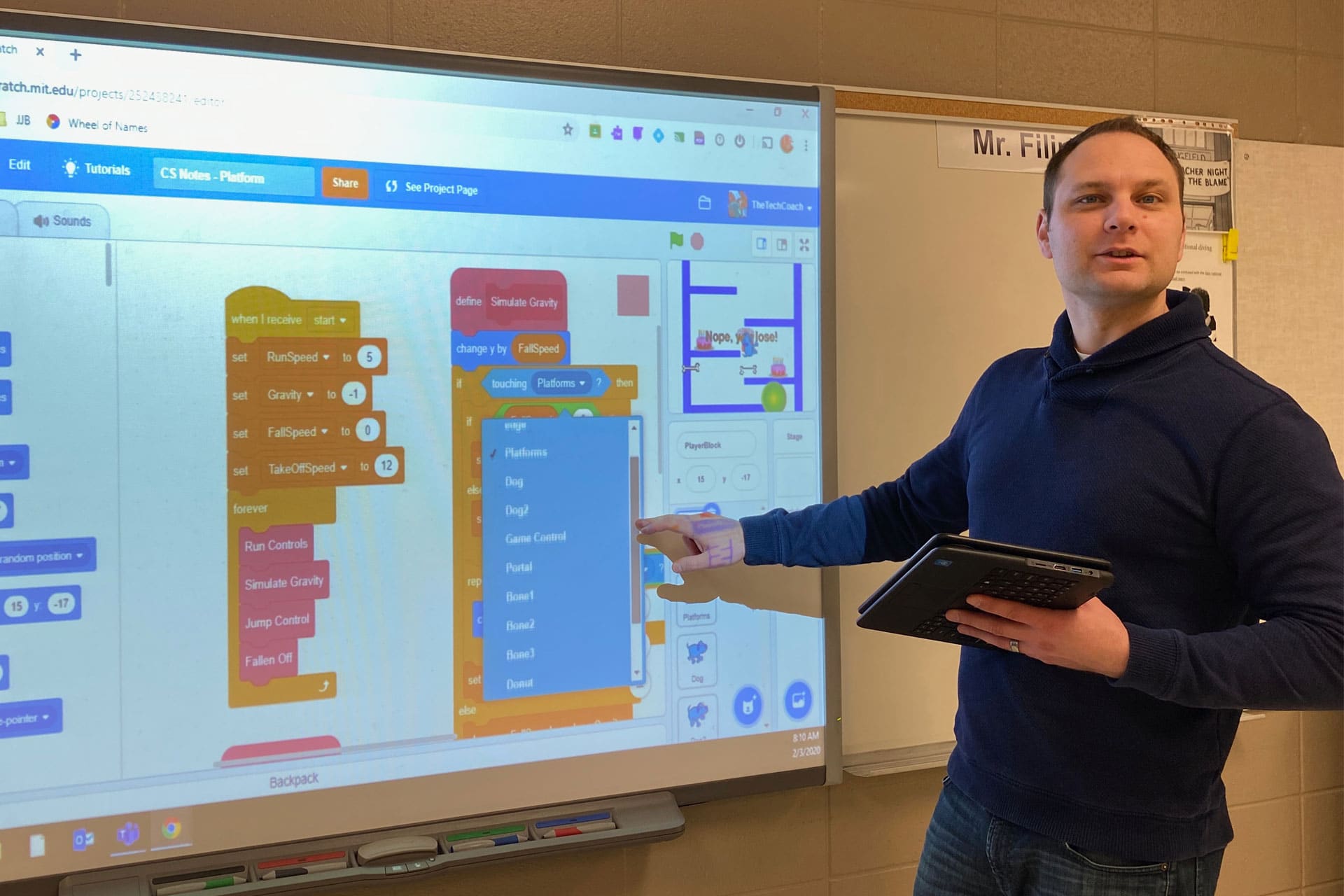sponsored
6 min Read
Remote learning flipped my classroom for the better

December 8, 2021
sponsored
6 min Read

December 8, 2021

Joseph Filiplic, Educator and Technology Coach, Edmonton Catholic Schools
With Microsoft technology, I can better support my students and their families and enrich the ways in which they want to engage and learn.
I have been a classroom teacher for 17 years. Being this far into my career, I thought I had it all figured out, from assessment to classroom management, from first day expectations to demonstration of learning evenings. I was even ready for COVID and remote learning.
I was wrong.
The COVID pandemic and the move to remote learning turned education upside down. I remember the Sunday evening vividly as our provincial government announced all students were going to transition to remote learning. Sitting in front of the TV watching the news and listening to the announcement, I grabbed my laptop and began brainstorming activities I was going to do with my students while online to keep them engaged in learning. I had this master plan that would not fail—I was simply going to turn my classroom into an online learning environment. How hard could it be? All my students are tech-savvy teenagers who live online 24/7, right? They all have the latest technology and the software skills to easily meet me technologically where I am, right?
Wrong.
I quickly realized a digital divide, a technological barrier, existed among my students. Not everyone was equipped with a suitable situation to fully embrace a remote, synchronous learning environment. Suddenly, my eighth graders became caregivers for younger siblings while their parents were having to work. The latest technology devices they have been bringing to school are suddenly limited by their internet connection at home now that their parents and siblings were all working online during the same hours. Even in my own home, my wife (who is a teacher as well) and both of our daughters (grade three and preschool at the time) were remote at the same time. Sitting around the kitchen table with two of us live teaching different classes and two of us live attending different classes did not work. Even though each of us had a reliable device, our internet connection was far from adequate. And if it is not working at my house, then is it possible it is not working for my students and their families either?
I quickly realized the grandiose plan of remote, synchronous learning was not the vision I had when the call to remote learning took place. It was at this point that I began to look at the tools at my disposal to ensure student engagement for whatever situation my students and their families were in. I turned to Microsoft Teams, Microsoft OneNote and the power of video to reach my students in the best ways possible. I flipped my lessons. A flipped classroom essentially has students viewing lesson content before class and using class time for homework. That was my plan, asynchronous learning. And that is just what I did. I began recording my lessons and placing them into Microsoft Teams where students could access at a time that worked best for them. I would post announcements into the various channels I had and met live with students who were able to do so. Others who could not attend live would Teams chat me and set up video conference calls for when it was convenient for both them and me. Microsoft OneNote housed all of their notes and I was able to distribute all the necessary material to them with only a few clicks. Videos were uploaded to Teams, linked to their OneNote notebooks and uploaded to YouTube.
I chose this route due to an early COVID poll of my students asking what devices they had access to. Laptops, desktops, smart TVs, tablets, phones, all different and from different manufacturers. I needed a solution to reach them all, and Microsoft Teams and OneNote was the obvious choice for me. I knew the apps would work on any device (except for smart TVs and that’s where YouTube made its appearance), would use minimal system resources, and were intuitive enough for the wide variety of my learners to be able to use. I could monitor my students’ progress, leave voice notes behind, mark up assignments and even schedule conference calls with families. I was always a quick notification away from a student who needed help or who just wanted to tell me about their day.
The tools Microsoft provided also had the easiest learning curve to overcome as I found many parents were using Teams already so it was easy for students to get technical help if needed. My school division also provided ample resources families could access should they need assistance as well.
The remote asynchronous experiment was a success. I found students thrived and were engaged in what I was putting out there for them. Families were working collaboratively as well, watching my lessons and responding together to discussion questions. For so long, the four walls of our classrooms have separated the home and family experience, from education. The move to remote asynchronous learning allowed for the family to fully engage with their children and school community. Families got to know me better than they would have if we had not had to move to remote learning.
My own family experienced this positive outcome of COVID as well. For the first time I could see how hard my daughters were working in school and how difficult the job of a primary teacher is. It allowed us to continue the lessons after school was done and to talk about our days over dinner, “Nothing” was no longer the response we were getting from asking, “What did you do today?”
Now being back in the classroom full-time, I have continued to use Microsoft Teams and OneNote. The barriers that these tools had removed during COVID convinced me that it is beneficial to continue their use. COVID taught me many things. One of those things is that students and their families have very dynamic lives. Traditional teaching is confined to the four-walled classroom, but our families no longer fit that idea. Travel, sports and extracurricular activities have returned, and families are embracing this second chance. Teams allows my students to review, ask questions and show their understanding at a time that fits them and for some, that time is after the traditional school day is done.
Sponsored by: Microsoft
